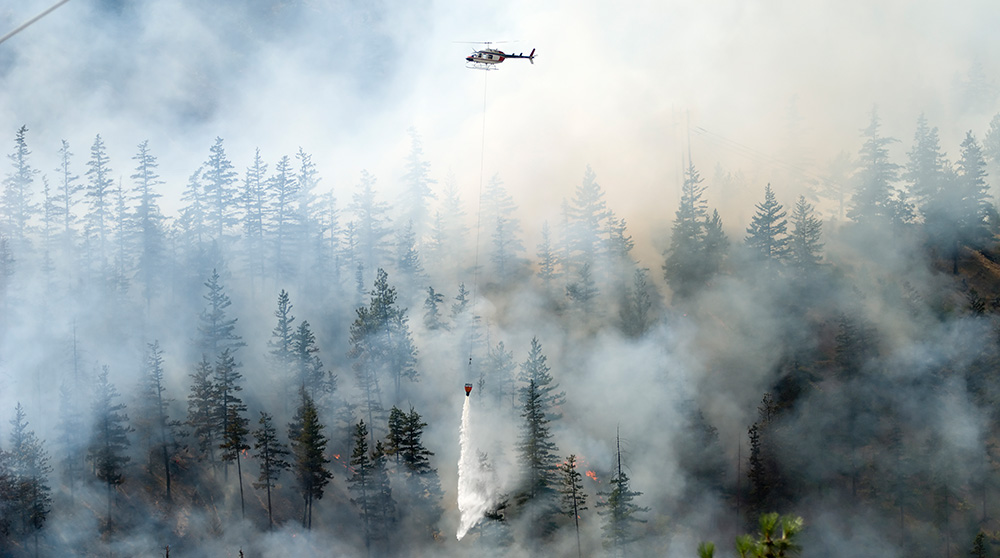Breathe easy: 9 essential tips to protect outdoor workers from wildfire smoke.

The latest data on forest fires confirms: Forest fires are becoming more widespread, burning nearly twice as much tree cover today as they did 20 years ago. While your region may not be prone to wildfires, wildfire smoke can travel hundreds of thousands of miles and impact the air quality and health of your workers. These expert tips can help protect all outdoor workers from wildfire smoke.
Check the conditions frequently. Before sending workers out, check the smoke and wind conditions in the area. If work can be relocated to another region that’s safer, reroute your crews for the day. Check the air quality frequently throughout the day using this smoke and fire map from the U.S. Environmental Protection Agency (EPA). If conditions change suddenly, be empowered to make a call to end the day or remove your crew.Provide respirators and other safety gear. According to the Centers for Disease Control and Prevention, a NIOSH-approved® respirator can help stop workers from breathing in harmful substances, like wildfire smoke, ash, and very small particles. When correctly worn, the respirator can reduce a worker’s exposure by a minimum of 10 times.Limit strenuous activity, when possible. Reduce the number of labor-intensive tasks, like lifting heavy objects, performing prolonged manual labor, or other actions that lead to heavier breathing or shortness of breath. If possible, focus only on the tasks that are less laborious, saving other work for a later date when the air quality may be better.Create additional water stations. Because wildfire smoke can lead to dehydration, set up water stations for team members and encourage them to drink enough water throughout the day.Enforce breaks. Workers should have ample break time in areas that are smoke-free. Employers should set and enforce break schedules that mandate time away from work and danger zones.Promote good hygiene. Offer hand sanitizer or hand wash stations to help workers remove any smoke or ash residue from their hands and clothing.Monitor high-risk individuals. Anyone with asthma or pre-existing health conditions that could be exacerbated from wildfire smoke may need additional accommodations. Consider what these are and how you can help. On top of that, ensure no one member of your team is working overtime in dangerous conditions. Have enough help so everyone stays as healthy as possible.Train your team. As with any health or safety protocol on the job, training employees is key. That includes how to look out for their own safety and their team members’ safety, how to wear safety gear properly, when and how to speak up or voice concerns, and how they’ll be contacted in an emergency situation or work cancellation.Make a disaster safety plan. Our experts promote this when it comes to any potential disaster, including wildfire smoke. Get your free Disaster Preparedness Guide to start equipping your team and business with the tools to weather and recover from disasters.
We’re here to support you and your team in all areas, including how to protect outdoor workers from wildfire smoke. When you need more resources, advice, or business coverage, talk to one of our local, independent agents. They’re well-versed in all things insurance and can guide you to the answers you need.
This content was developed for general informational purposes only. While we strive to keep the information relevant and up to date, we make no guarantees or warranties regarding the completeness, accuracy, or reliability of the information, products, services, or graphics contained within the blog. The blog content is not intended to serve as professional or expert advice for your insurance needs. Contact your local, independent insurance agent for coverage advice and policy services.







